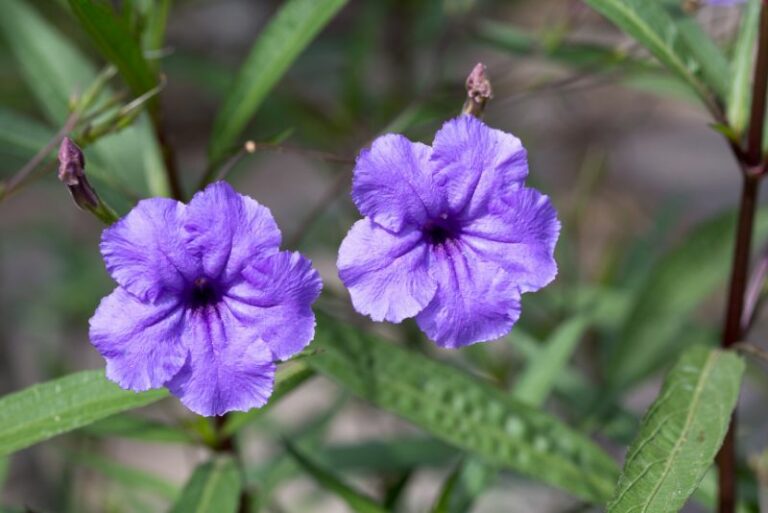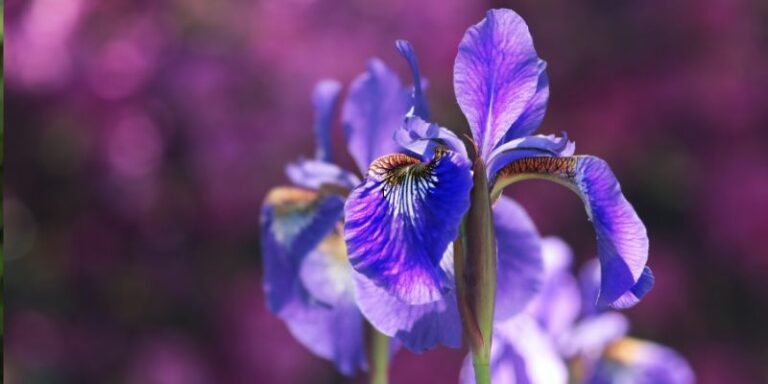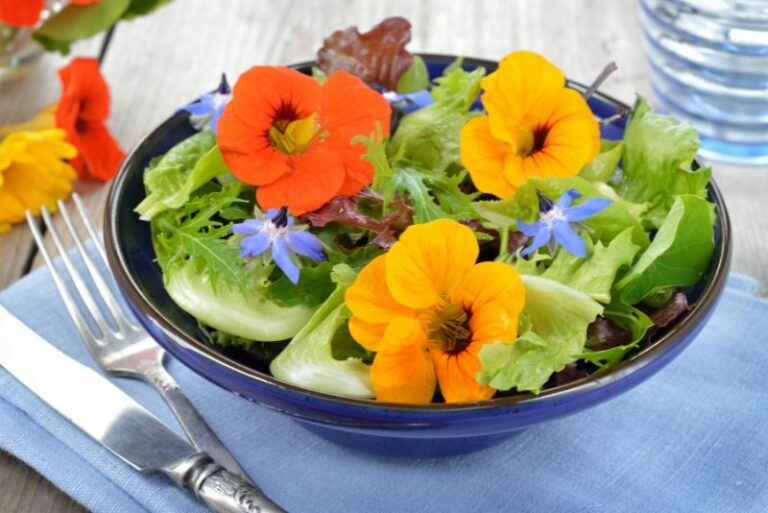Oenothera Fruticosa: How To Grow Narrowleaf Sundrops
As the warm summer months begin to wane and we start to feel the crispness of fall in the evening air, many gardeners start to yearn for flowers that will continue to shine light and color into the lengthening nights. One flower that thrives during this in-between season is the narrowleaf sundrop, scientifically known as Oenothera fruticosa.
With bright yellow blooms that open in the late afternoon and evening, the narrowleaf sundrop is the perfect addition to any autumn garden, bringing a splash of sunshine at the end of day when nature’s palette has begun to shift towards burgundies and burnished golds.
In this blog post, I will share with you tips and tricks for successfully growing these enchanting flowers so you too can enjoy their luminous glow for weeks to come as summer fades into fall’s embrace.
Oenothera Fruticosa Overview
| Parameter | Details |
|---|---|
| Common Name(s) | Narrowleaf evening primrose, Sundrops |
| Scientific Name | Oenothera fruticosa |
| Family | Onagraceae |
| Height | 1-3 feet |
| Light | Full sun to partial shade |
| Water | Medium |
| Soil | Well-drained, sandy or loamy soil. Tolerates poor soil conditions |
| Fertilizer | Light feeding with a balanced, slow-release fertilizer at the beginning of the growing season |
| Pests and Diseases | Generally pest-free. Susceptible to leaf spots, powdery mildew, and rust |
Please note that these are general care guidelines for Oenothera fruticosa. Individual plant needs can vary based on environmental conditions. Always consult with a local nursery or extension service for specific care advice in your area.
All About Oenothera Fruticosa
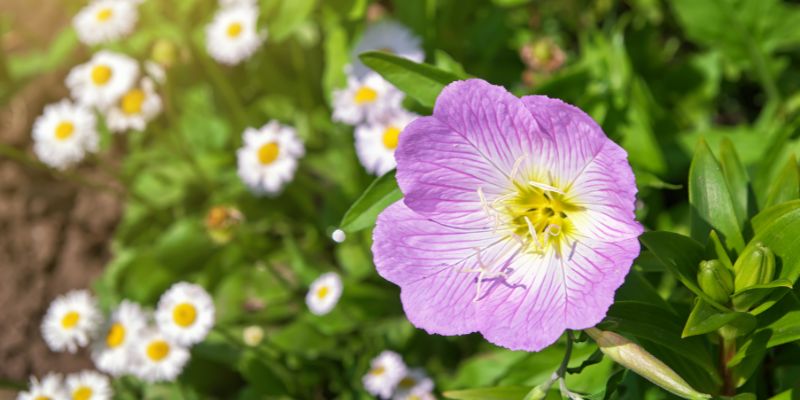
The Oenothera fruticosa, commonly known as the narrowleaf sundrop or southern sundrop, belongs to the family of Onagraceae. This plant is native to eastern and central North America and is a perennial that typically grows up to 3 feet tall.
The leaves of the Oenothera fruticosa are narrow and lance-shaped, giving it its common name. The foliage is an attractive blue-green hue that provides a lovely contrast to the bright yellow of the blossoms.
One of the distinguishing features of this plant is its four-petaled flowers that are about 2 inches in diameter. These blooms are a cheerful, bright yellow and have a delicate, sweet fragrance. They typically open in the late afternoon or evening, hence the name ‘sundrop’.
The sundrop blossoms from late spring to early summer, making it a beautiful addition to any garden seeking to prolong the feeling of summer as the season transitions into fall. This plant is also relatively low maintenance and is tolerant of a variety of conditions, including drought and different soil types. It’s an excellent choice for xeriscaping or for gardens that struggle with dry conditions.
As for its propagation, the Oenothera fruticosa can be grown from seeds, and it also spreads via rhizomes. Its rapid growth and spreading habit may lead to it crowding out other plants if not carefully managed. This makes it a great choice for areas where you might want to establish quick ground cover.
The Oenothera fruticosa attracts a variety of pollinators with its bright yellow blooms and sweet scent, including bees, butterflies, and moths. This makes it an excellent addition to pollinator gardens. Despite its delicate beauty, it’s also deer resistant, making it a practical choice for gardens that struggle with these four-legged visitors.
Varieties of Oenothera Fruticosa
1. Oenothera Fruticosa ‘Fireworks’
The ‘Fireworks’ variety of Oenothera fruticosa is a stunning cultivar with a rich history. Its vibrant, fiery red stems and buds give it its name, standing in contrast to the bright yellow flowers that bloom in the late afternoon. This variety has a particularly strong sweet scent, attracting pollinators from far and wide. ‘Fireworks’ shares similar growth patterns and height with its parent plant, growing to about three feet tall and spreading via rhizomes efficiently.
2. Oenothera Fruticosa ‘Fyrverkeri’
The ‘Fyrverkeri’ variety, also known as ‘Fireworks’, has its origins in Sweden. It is a compact plant, typically growing up to 2 feet tall, with leaves that are a beautiful burgundy shade in spring and fall. Its blossoms are a bright yellow, similar to the original species, and possess a mild, pleasing fragrance. Despite its smaller stature, ‘Fyrverkeri’ shares the same hardiness and tolerance for various conditions as the standard Oenothera fruticosa.
3. Oenothera Fruticosa ‘Summer Solstice’
A newer variety, the ‘Summer Solstice’ comes with a longer blooming season, adding color to gardens from mid-summer through the first frost. Its blooms are a deeper shade of gold compared to the original Oenothera fruticosa, and they open earlier in the day, providing a beautiful spectacle as the evening approaches. The scent of ‘Summer Solstice’ is subtle yet enticing, drawing in bees and butterflies throughout the day.
Each of these varieties of Oenothera fruticosa shares a common lineage with the parent plant. They all boast the distinctive four-petaled, bright yellow blooms that are characteristic of the species, and they all attract a variety of pollinators with their sweet fragrances. Despite their similarities, each variety has its unique attributes, making them versatile additions to any garden. Whether you’re looking for something classic like the ‘Fireworks’, or something with a longer bloom time like the ‘Summer Solstice’, there’s an Oenothera fruticosa variety for every gardener’s needs.
Oenothera Fruticosa Care Procedures
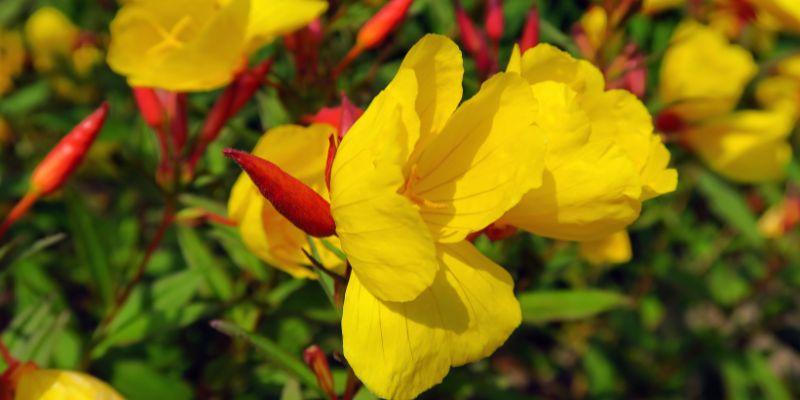
The Oenothera fruticosa is a hardy, low-maintenance plant. However, as with any living thing, it does require some care to thrive and reach its full potential. Here are some essential tips for ensuring your narrowleaf sundrop stays healthy and vibrant throughout the growing season:
Light
The Oenothera fruticosa thrives in full sun, requiring at least six hours of direct, unfiltered sunlight daily. While the plant can withstand partial shade, inadequate sunlight may result in fewer flowers and a more leggy, sparse growth. When choosing a location for your sundrop, opt for a spot in your garden that receives plenty of light throughout the day, particularly in the afternoon and evening, when the blossoms open.
Temperature
Oenothera fruticosa is a hardy plant, capable of withstanding a wide range of temperature conditions. It flourishes in USDA hardiness zones 4 through 9, which means it can tolerate temperatures as low as -30 degrees Fahrenheit (-34 degrees Celsius) and as high as 30 degrees Fahrenheit (-1 degree Celsius) without significant damage. However, optimal growth is observed between 60 degrees Fahrenheit (15 degrees Celsius) and 70 degrees Fahrenheit (21 degrees Celsius). During especially hot or cold periods, ensure the plant is adequately watered and monitor for signs of stress, such as wilting or discoloration. Growing Oenothera fruticosa in an area with some wind protection can also help maintain a stable temperature and protect against potential damage from extreme weather conditions.
Water
The Oenothera fruticosa is a drought-tolerant plant, making it capable of withstanding relatively long periods without water. However, to ensure optimal growth and flowering, it is advisable to maintain a consistent watering schedule. During the growing season, typically in the spring and summer, the plant should be watered deeply once a week. This encourages the development of a strong, extensive root system. In drier conditions or during a heat wave, you may need to water the plant more frequently. The top inch of soil should be allowed to dry out between waterings to prevent water-logging and the associated risks of root diseases. In the cooler months, watering can be reduced, as the plant’s water requirements decrease.
Humidity
As a native of the southeastern United States, the Oenothera fruticosa is well-adapted to areas with moderate to high humidity. However, it can also survive in areas with lower humidity levels. This plant does not have specific humidity requirements, making it a versatile addition to gardens in a variety of climates. Despite this, in extremely dry conditions, it may benefit from occasional misting with water to mimic the humidity of its natural habitat. It’s important to remember, though, that like with watering, overdoing it can lead to fungal diseases, so it’s crucial to strike a balance.
Soil
The Oenothera Fruticosa prefers well-draining soil, as it is naturally found in sandy or gravelly soil types. However, it can also grow in loamy and clay soils as long as they are well-drained. To prepare the soil for planting, combine equal parts of garden soil, sand, and organic compost. This blend will ensure that the soil drains well while also providing the nutrients that the plant needs for optimal growth.
Soil pH
The Oenothera Fruticosa is flexible in terms of soil pH and can thrive in mildly acidic to mildly alkaline soils, with a pH range between 6.0 and 7.5. You can test your soil’s pH using a soil test kit available at most garden centers. If your soil is too acidic, you can add lime to raise the pH, and if it’s too alkaline, you can add sulfur or organic matter like peat moss to lower the pH.
Soil Preparation
To prepare the soil for planting Oenothera Fruticosa, start by clearing the planting area of any weeds or grass. Next, dig a hole that is twice as wide and just as deep as the root ball of your plant. Mix the excavated soil with compost and sand to improve its texture and nutrient content, then backfill the hole with the soil mixture. Place the plant in the hole, making sure that the top of the root ball is level with the soil surface. Backfill the hole with the remaining soil mixture, firming it gently around the base of the plant. Water thoroughly to settle the soil around the roots.
Remember to always prepare the soil and the planting area before the planting season begins to allow adequate time for the soil amendments to take effect. This preparation will ensure that your Oenothera Fruticosa has the best possible start and can grow and bloom beautifully throughout the season.
** Fertilizer**
The Oenothera Fruticosa is not a heavy feeder and thus doesn’t require frequent fertilization. However, for promoting vigorous growth and abundant blooming, a balanced, slow-release fertilizer can be applied in the early spring, as the plant starts to show new growth. Look for a fertilizer with an NPK ratio of 10-10-10, which refers to the percentages of nitrogen (N), phosphorus (P), and potassium (K), respectively.
To apply the fertilizer, follow the instructions on the product packaging for the right amount. Generally, sprinkle the fertilizer evenly around the base of the plant, keeping it at least a few inches away from the stem to avoid burning the roots. Then, water thoroughly to help the nutrients seep into the soil.
Remember, overfertilizing can lead to lush foliage growth at the expense of flowering, and it can also damage the plant. Therefore, it’s always better to err on the side of caution and use less rather than too much. If your Oenothera Fruticosa is planted in rich, organic soil, it may not need additional fertilization at all.
In terms of specific nutrients, Oenothera Fruticosa doesn’t have unique requirements. However, if your soil is deficient in any essential nutrients, which a soil test can determine, consider using a fertilizer product that can address these deficiencies.
Always remember to follow good fertilization practices. Apply fertilizer to damp soil to avoid root burn and water well after application to ensure the nutrients are absorbed into the soil. Lastly, avoid fertilizing late in the season, as this can stimulate new growth that may not harden off before the onset of winter.
** Care Procedures for Repotting Oenothera Fruticosa**
Repotting is an essential care procedure for Oenothera Fruticosa, particularly if it’s growing in a pot or container. Here’s a step-by-step guide to repotting this plant:
Step 1: Choose the Right Time
The best time to repot Oenothera Fruticosa is in early spring when the plant is beginning to emerge from its winter dormancy and just before the start of the growing season. This gives the plant sufficient time to establish itself in the new pot before the onset of the more rigorous growth periods.
Step 2: Select an Appropriate Pot
When choosing a new pot, select one that is only slightly larger than the current one – generally, a couple of inches wider in diameter. Make sure it has adequate drainage holes to prevent waterlogging.
Step 3: Prepare the Potting Mix
As with planting, Oenothera Fruticosa prefers a well-draining soil mix. You can prepare this by combining equal parts of garden soil, sand, and organic compost. This blend ensures good drainage while providing the necessary nutrients.
Step 4: Removal from the Current Pot
Gently extricate the plant from its current pot. Try to keep as much of the root ball and surrounding soil intact as you can.
Step 5: Place the Plant in the New Pot
Add a layer of the prepared soil mix to the base of the new pot. Place the Oenothera Fruticosa in the center of the pot, ensuring the top of the root ball is level with the edge of the pot. Fill around the root ball with the soil mix, and gently firm it in.
Step 6: Water Thoroughly
After repotting, water the plant thoroughly. This helps settle the soil around the roots and initiates the recovery process for any minor root damage that may have occurred during the repotting process.
Remember, you should only repot Oenothera Fruticosa when necessary, typically if it has outgrown its current pot or if the soil has degraded to a point where it’s affecting the plant’s health. Always monitor the plant closely after repotting and adjust care practices as necessary to support its recovery and growth.
** Propagation of Oenothera Fruticosa**
Oenothera Fruticosa, also known as Sundrops or Evening Primrose, can be propagated through several methods – division, cuttings, or seeds. Each method has its own process, benefits, and considerations.
Division
Division is the easiest and the most common method of propagating Oenothera Fruticosa. This process is best carried out in the early spring or fall when the plant is in its dormant state.
- Step 1: Start by gently removing the plant from the ground or pot.
- Step 2: Using a sharp, clean knife, divide the root ball into several sections, ensuring each section has a portion of roots and shoots.
- Step 3: Replant each division immediately into a prepared hole, ensuring the top of the root ball is level with the soil surface. Water thoroughly.
Cuttings
Propagation from cuttings is another method you can use, although it requires a bit more patience.
- Step 1: In early summer, select a healthy, non-flowering shoot and cut a 4-6 inch long section. Remove the lower leaves and any flower buds.
- Step 2: Dip the cut end in rooting hormone and insert it into a pot with a well-draining soil mix.
- Step 3: Keep the cutting in a warm, bright location, but out of direct sunlight. Keep the soil lightly moist until roots develop.
Seeds
Growing Oenothera Fruticosa from seeds can be a rewarding process. However, it requires the most time.
- Step 1: Sow the seeds in a pot filled with a well-draining soil mix in late winter or early spring. Cover them lightly with soil, as they need light to germinate.
- Step 2: Keep the pot in a warm location with good light. Keep the soil lightly moist, but avoid waterlogging.
- Step 3: Once the seedlings are large enough to handle, thin them out or transplant them into individual pots until they’re ready to be planted out.
Remember, propagation, like all aspects of gardening, requires patience and practice. Always pay attention to the specific conditions and care each method requires for successful propagation.
** Care Procedures for Pruning Oenothera Fruticosa**
Pruning is a key aspect of maintaining the health and shape of your Oenothera Fruticosa, enhancing its aesthetic appeal and promoting vigorous, healthy growth. Follow this step-by-step guide to pruning this plant effectively:
Step 1: Understand When to Prune
The best time to prune Oenothera Fruticosa is in late winter or early spring, just before new growth begins. At this time, you can easily see the plant’s structure and determine which stems to remove.
Step 2: Gather the Necessary Tools
For pruning, you’ll need a pair of sharp, clean pruning shears or scissors. Using clean tools helps prevent the spread of plant diseases.
Step 3: Identify Which Stems to Prune
Start by identifying dead, diseased, or damaged stems, which should be removed to maintain the plant’s overall health. Also, identify any stems that are crossing or rubbing against each other, as these can create wounds that can invite disease.
Step 4: Make Clean, Diagonal Cuts
Make clean, diagonal cuts just above a bud or leaf node. This encourages new growth in the direction of the bud. Diagonal cuts also prevent water from pooling on the cut surface, which could lead to rot.
Step 5: Thinning Out
If the plant is too dense, consider thinning it out by removing some of the older, woody stems at the base. This improves air circulation and light penetration, reducing the risk of disease and encouraging healthier growth.
Step 6: Dispose of Pruned Material
Dispose of pruned material, especially if it contains disease or pest infestations, to avoid spreading these issues back to the plant or other plants in your garden.
Step 7: Monitor the Plant
After pruning, keep a close eye on the plant. Make sure it’s responding well to the pruning and isn’t showing signs of stress or disease. If needed, adjust your care schedule to help the plant recover more effectively.
Remember, pruning should be a regular part of your Oenothera Fruticosa care schedule. While it might seem like a daunting task, with some practice, you’ll find it becomes a rewarding process that keeps your plant healthy and beautiful.
Troubleshooting
Despite our best efforts, problems can arise when growing Oenothera Fruticosa. Here are some common issues and potential solutions to help you keep your plant healthy and thriving.
Growing Problems
- Yellowing leaves: This could be a sign of overwatering. Make sure the plant is draining properly and not sitting in water. Cut back on watering and allow the soil to dry out slightly between watering.
- Wilting or drooping: This may be caused by underwatering or extreme temperatures. Check soil moisture levels regularly and ensure the plant is not exposed to extreme heat or cold.
- Stunted growth: Lack of nutrients may lead to slow or stunted growth. Consider using a balanced, slow-release fertilizer during the growing season to ensure the plant is getting essential nutrients.
Pests
- Aphids: These small insects can be a common problem. They suck sap from the leaves, causing them to yellow and curl. Use insecticidal soap or neem oil to control aphids.
- Slugs and Snails: These pests can chew on the leaves and stems of Oenothera Fruticosa. Handpick them in the early morning or late evening and consider using slug pellets if the problem persists.
Diseases
- Powdery Mildew: This fungal disease can cause white, powdery spots on leaves. Increase air circulation, reduce overhead watering, and use a fungicide if necessary.
- Root Rot: Overwatering can cause roots to decay. If your plant is wilting despite regular watering, it may have root rot. Repot the plant in fresh, well-draining soil, and remove any decayed roots.
Remember, the key to successful troubleshooting is to act quickly when you notice a problem. Early detection and intervention can often save a plant before the issue becomes too severe. Always keep an eye on your Oenothera Fruticosa, and adapt your care practices as needed to maintain its health.
Frequently Asked Questions about Oenothera Fruticosa
1. Is Oenothera Fruticosa a perennial plant?
Yes, Oenothera Fruticosa is a perennial plant which means it can live for more than two years, generally flowering and producing seeds over and over again during its lifespan.
2. What are the ideal growing conditions for Oenothera Fruticosa?
Oenothera Fruticosa prefers full sun to partial shade and well-drained soil. It is fairly drought resistant once established and can tolerate a variety of soil types, including poor, dry, or rocky soils.
3. When does Oenothera Fruticosa bloom?
The plant typically blooms from late spring into early summer, but flowering can continue into fall if conditions are favorable.
4. Can I grow Oenothera Fruticosa indoors?
While it is possible to grow Oenothera Fruticosa indoors, it generally prefers outdoor conditions. If you do choose to grow it indoors, make sure it has plenty of light and good air circulation to prevent disease.
5. How should I prune my Oenothera Fruticosa?
Generally, you should prune your Oenothera Fruticosa in late winter or early spring before new growth begins. Remove dead, diseased, or damaged stems, and any that are crossing or rubbing against each other.
6. What should I do if my Oenothera Fruticosa has yellow leaves?
Yellow leaves can be a sign of overwatering. Make sure your plant is draining properly and not sitting in water. Cut back on watering and allow the soil to dry out slightly between each watering.
7. What pests or diseases are common in Oenothera Fruticosa?
Some common pests include aphids, slugs, and snails. As for diseases, the plant can suffer from powdery mildew and root rot. Regularly check your plant for any signs of pests or disease and treat accordingly.


